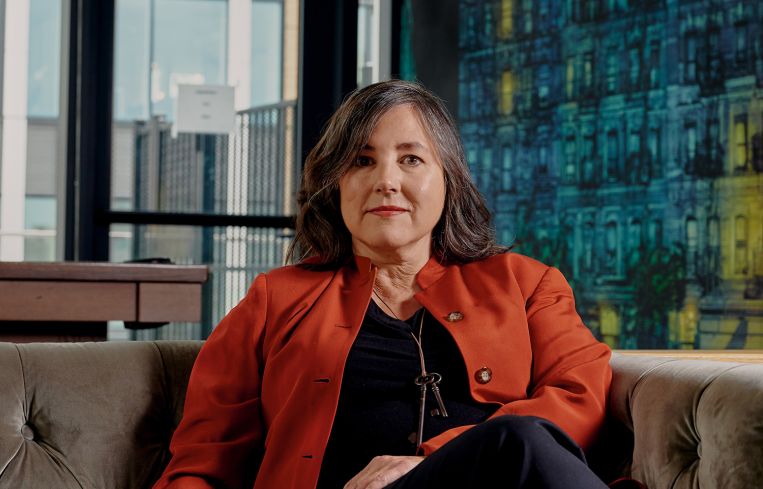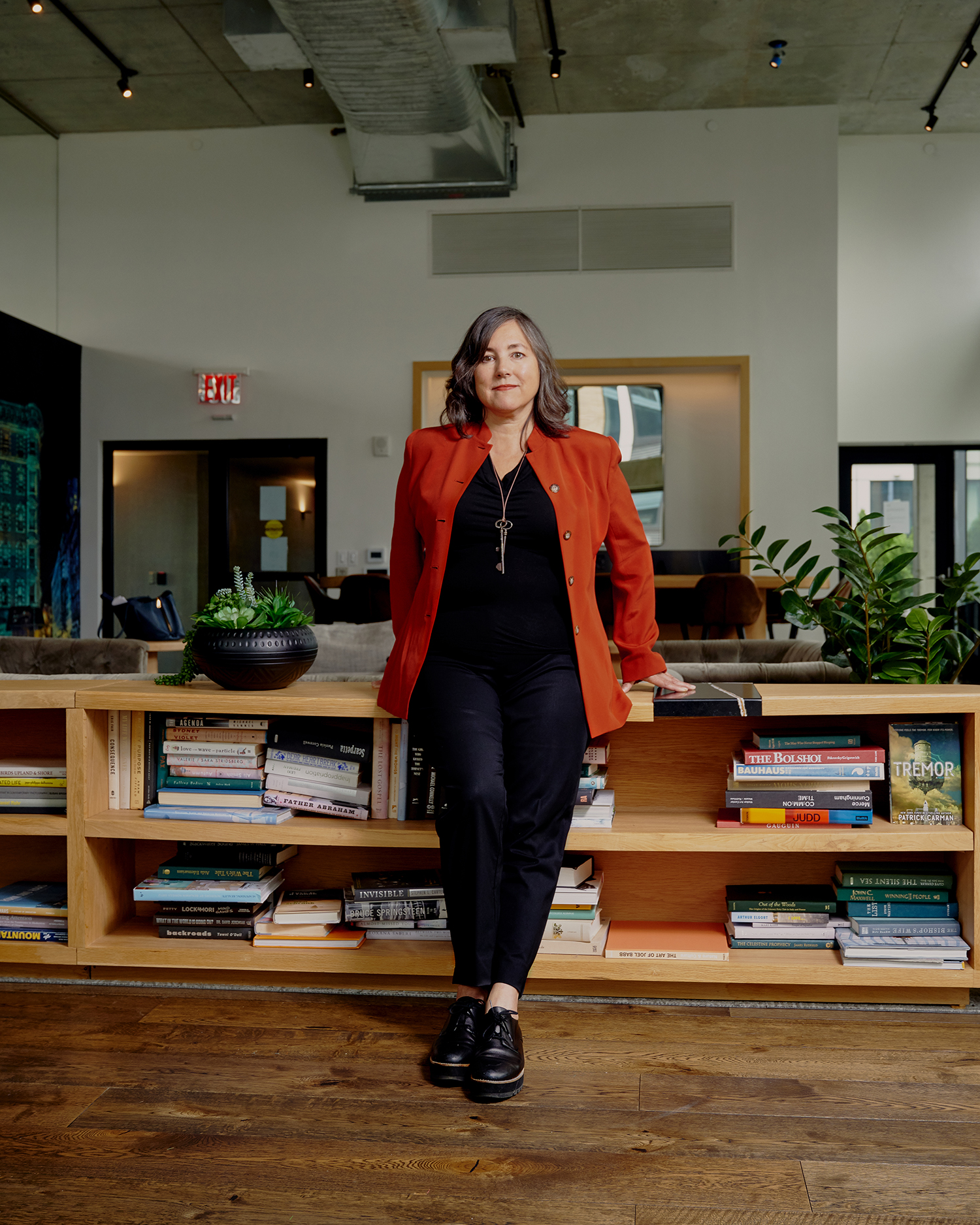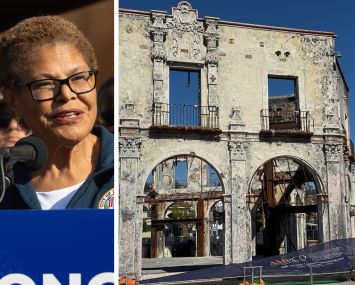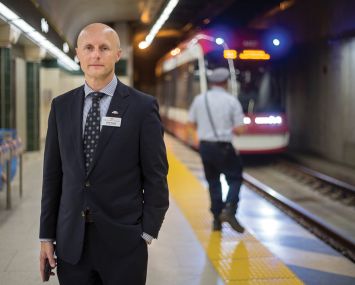Lisa Gomez Talks About the Challenges Facing NYC’s Affordable Housing Developers
By Rebecca Baird-Remba June 27, 2022 3:13 pm
reprints
As a new mayor and a new City Council navigate the third year of the pandemic, New York affordable housing developers are facing their own obstacles: the expiration of 421a, a major development tax break; understaffed city housing agencies; and rising construction costs.
Lisa Gomez replaced Ron Moelis as CEO of L+M Development Partners in December after 17 years in various roles at the firm, most recently as chief operating officer. Gomez took the helm of one of the largest affordable development firms in New York City during a productive but fraught moment. L+M is working on major projects that include Bronx Point, a 542-unit complex in the South Bronx that will include the city’s first hip-hop museum, and Sendero Verde, a 361-unit affordable project in East Harlem that will be built to passive house standards.
Its largest project under construction is Alafia, a 2,400-unit affordable and supportive housing project in the Spring Creek section of East New York, Brooklyn. The first phase is expected to be complete in the spring of 2023. Other major projects include a 500-unit, partially affordable development in Long Island City, Queens, and a 171-unit mixed-use tower for the National Urban League in Harlem, which will include 70,000 square feet of offices, a Trader Joe’s, a Target and a civil rights museum. L+M also has two major mixed-use developments underway in Newark — one for the New Jersey Performing Arts Center and another for the Newark Museum of Art.
Commercial Observer spoke with Gomez last week. The interview was edited for length and clarity.
Commercial Observer: What is L+M working on right now in the city?
Lisa Gomez: I think the things that we’re focused on right now are the successful completion of the large projects we have underway — like Bronx Point, which is anchored by the Universal Hip Hop Museum, and the mixed-use National Urban League project on 125th Street. We’re closing on a project in Brooklyn called Alafia. On the preservation side, we just started Linden Houses, which is a NYCHA RAD/PACT [Rental Assistance Demonstration/Permanent Affordability Commitment Together] project. Essex Crossing is a very large project that we’re winding down. We’re working on another large one in Long Island City with Domain Companies.
What about outside of New York?
So, historically, across the country, we’ve been sort of opportunistic. We’ve done several projects in California, including very large preservation jobs in San Jose. We’ve done some new construction in New Orleans and a little bit in San Francisco. But right now, we’re really focused more on existing preservation projects outside of New York. We’re working in D.C., both in new construction and preservation. We’re working in Michigan, Chicago and a few other sort of urban areas that are not ready for prime time. And, with the exception of D.C., those all sort of involve buying an existing building and rehabbing it, and either putting in an affordability component or extending an affordability component.
How are you feeling about affordable development here in New York City, given the expiration of 421a happening this month, without any sort of clear timeline for renewal or replacement?
We have an affordable housing crisis in New York. And, in fact, nationally, what used to be really thought of as a wealthy coastal city issue was either revealed through the pandemic or maybe exacerbated in the pandemic, such that every county across the country is really engaged in conversations about affordable housing — in a way that is sort of different from what it was five or 10 years ago. So there is an incredible need.
I think there are resource constraints, which is always sort of a gating issue. Starting at the top level, at the federal level, in “Build Back Better” there was an expansion of the Low Income Housing Tax Credit proposed and other tax-credit resources. There’s some resources at the federal level, but by and large New York does more than any locality in the country, bar none. So, between New York State and New York City and NYCHA, I think that there is a robust commitment to affordable housing.
But there’s a limit to what people can do through financial resources, and increasingly through people resources — the agencies are understaffed and they are having a hard time in a hot job market attracting people. So I think that’s something that they’re working on. I think the traditional deal volume is probably not going to get done this year, as the new administration starts to settle in and figure out its way.
I think the other things that we’re focused on are sustainability and carbon neutrality. We finished our first three buildings in Brownsville. We think they are unusual for affordable housing in that they’re all geothermally heated, and there’s no gas connection. We’re also finishing our second Passive House building, in partnership with Jonathan Rose, in East Harlem. That’s another very large, all-affordable project.
Is that Sendero Verde?
Yep, that’s Sendero Verde. So I think we’re focused on really trying to move the needle on technology, energy consumption and sustainability. We’ve recently created a new position in the company for a director of sustainability. And she’s really going to try to hone our efforts and help us figure out what is working and do more of that — and what maybe isn’t working so well, so we won’t do more of that. And try to really get the leaders in that sector.

So you were saying that the traditional volume is not going to get done this year. And the 421a expiration is part of that?
I’m not even talking about 421a. Much of what we do doesn’t rely on 421a. I think this is really just about there being a backlog of financing requests in front of the city agencies. And it’s about resources. It used to be that you would go in the door and come out in a couple of years. Now it’s just taking longer due to staffing constraints, financial constraints and maybe increasing bureaucracy. We are very heartened by Mayor Adams’ commitment to quote-unquote “getting stuff done.”
I recently wrote about the New York Housing Conference report about the Department of Housing Preservation and Development staffing shortages. And even before that report came out, I was hearing from affordable housing finance attorneys who do deals with HPD about how their whole development team was gone. So I guess the question is: Have you found that there’s just not enough staff to really handle your financing requests?
Look, I mean, I want to give them the benefit of the doubt. They’re a new administration. With the end of an administration, it always sort of clears out and people move on. But it’s definitely acute. And I think it’s probably exacerbated by a hot job market where it’s difficult to attract people to public service, when there are a lot of jobs around.
I think Jessica Katz [Adams’ chief housing officer] is brilliant and she knows what’s needed. Hopefully, in this new budget that they’ve passed with the City Council, they’ll really be able to sort of ramp up. I know they’ve been working on putting a plan together. I think there was an outline — I haven’t had a chance to look at it — published today. But I think that it’s tough to do something without money. With the new budget, hopefully, we’ll start to see them getting their sea legs and ramping up.
On that note, what do you hope to see from the Adams administration housing-wise?
I hope to see a continued and hopefully accelerated commitment to financing both the preservation and construction of new affordable housing. I hope to see them really taking a serious look at ways they can expedite and cut out unnecessary steps in the process, be it at the Department of Buildings, be it resident file approval, lease-up, be it the Fire Department. There’s a lot of creakiness that has set in, a lot of the cogs that will have to turn to make stuff happen. So I’m hopeful that they’re going to really take a hard look and really set the tone that affordable housing is a priority, and they’re driving toward results.
Adams is trying to distinguish himself from the previous mayor by saying that he’s not doing unit goals, but I guess it’s not fully clear to me what the metrics are gonna be.
I don’t know. I’m as interested as you are to see what the metrics will be and how we will judge our collective successes or failures.
Yeah, it’s just kind of funny. He says, “We don’t want unit goals, but we are judging it by the number of people housed.” What does that mean?
I’d like to see them work harder to shorten the length of time it takes to get somebody through the application process for affordable housing. And there’s been a little bit written about this lately as well, in terms of how long it takes between various agencies to cobble together both the approval and then the residents’ rental subsidy.
You mean for low-income and supportive housing?
Yeah. Well, it’s not even necessarily supportive. But everybody who comes through an affordable housing lottery has to go through an approval process. Then, once that approval process is finished, they have to go to the agency that’s providing them a rental subsidy, which many of them qualify for, and then they have to get sorted and qualified. And I’d love to see us collectively say, “OK, how can we do this faster? How can we get people housed faster?”
In terms of New York City, which neighborhoods do you think the administration should focus on for affordable housing development?
I support the notion that every neighborhood should have some affordable housing. I am a realist in knowing that some neighborhoods are much more expensive to acquire land. So, unlike in the 1970s, when the city had bunches of abandoned land and buildings that were taken in tax foreclosure, that is not the case today. So I think we need more affordable housing everywhere. I don’t really know how you do that without 421a.
Are there any other specific housing policy priorities you’d like to see either from the city or from the state moving forward?
I think the city and the state are both very committed to affordable housing. In the past, there’s been such a difference on the state level. In the past 10 years, state resources have really shifted more toward affordable housing and not just toward 421a bond finance deals. I think that’s been great. I think that the mixed income and mix of nonsupportive and supportive housing together is great.
But we have to be realistic about some of the needs of supportive residents, and being sure that the supportive housing providers have the resources that they need to support those residents in a good way. So I think that’s an evolving thing that we’ll need to continue to work on together. We’re all in on better energy efficiency, carbon capture — but we need to move the industry to the point of being able to underwrite those savings.
We’re also committed to the next generation of developers and people in our field. Something that’s near and dear to me is making sure that people have exposure to this field, even if they didn’t grow up in the business. So we do a lot with internships and education and partnerships with emerging developers. We’re going to continue doing that and hopefully grow that some more.
In terms of the political outlook for development, how are things looking with the current City Council, given that most of the members are new?
There have always been term limits, and there has always been a rotating slate of City Council members. We work with them and try to address their priorities. Many of them sort of came through the ranks as the staff for other City Council people. I think it’s a little hard to say that you want more affordable housing, but you don’t want developments. You have to sort of be able to be intellectually honest with yourself that those two things are binary. But we try to work in concert with community boards and neighborhood residents. Let’s face it, developers are generally not beloved as a species. But we try to show up and do what we say we’re going to do, even when things go wrong.
Right, I guess I’m curious how you feel about going through the Uniform Land Use Review Procedure with the City Council? It seems like every year it gets harder.
That is a true statement: Every year it does get harder. I will say this, having worked in other locations, there is a certainty to ULURP. Once you go in, you’re going to come out because there’s a time clock on it. In other locations, not so much. I mean, you can go forever with an obstructionist locality. I think that ULURP is never the preferred route because it’s time-consuming and expensive. We’ll have to see where City Planning and the administration go in terms of sort of supporting density for affordable housing, because I don’t think it gets done any other way.
I appreciate that the Council members all have constituents who elected them, and those people probably don’t want construction cranes next door. Those are the people who are already there. So we’ll continue to work with Council people and try to have honest dialogue. Most of the time it works. And we think that most of the time it will continue to work.
I was just curious given the most recent Harlem development drama over One45, with the developer having to withdraw the project in the face of the local councilmember’s opposition.
It’s unfortunate when you get caught between Council people. You try to avoid that whenever possible.
Are there any other housing policy or zoning issues that you want to touch on?
I think continuing to look at the need for parking versus the need for housing is a thing. Probably not a thing in Queens, but in other boroughs, in places that are more transit-rich, people are willing to acknowledge that maybe you don’t need as much parking and maybe affordable housing will be better. I think retail, the issues surrounding the retail apocalypse, will continue to evolve. Some retail strips are not going to be coming back, and you have to make sure that you don’t have dead street fronts. That is the thing we all have to focus on.
What do you mean when you say some retail strips aren’t coming back?
If you had ground-floor retail in Harlem, the Bronx, maybe central Brooklyn — those tenants who went out during the pandemic, I don’t know if they are going to necessarily be replaced. I think that it’s just part of the retail shift as people move online. And the higher-cost operating businesses like restaurants or delis have higher wage requirements. So I think it’s a tough business environment for retail.
Rebecca Baird-Remba can be reached at rbairdremba@commercialobserver.com.


